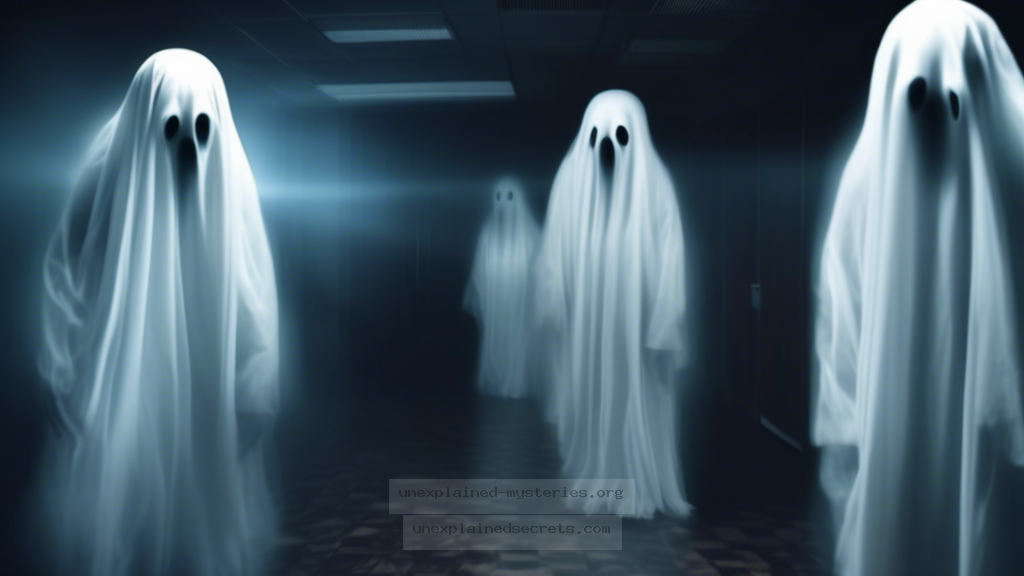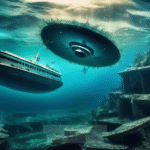What Can We Learn from the Most Compelling Ghost Sightings of the 21st Century?
What Can We Learn from the Most Compelling Ghost Sightings of the 21st Century?
The phenomenon of ghost sightings has captured human imagination for centuries, often blurring the lines between reality and the supernatural. As we step into the 21st century, modern technology has played a pivotal role in documenting these eerie encounters. But what can we truly learn from the compelling ghost sightings reported in our time? This question is not just intriguing; it holds the potential to reshape our understanding of the paranormal, human consciousness, and perhaps even the nature of reality itself. In this blog post, we will delve into historical contexts, core concepts, documented cases, and even the implications of these ghostly encounters. Prepare to journey into the unexplained, as we explore the complexities surrounding ghost sightings in the modern age.
The Historical Context of Ghost Sightings
Ghost sightings are far from a modern phenomenon; they have been reported since ancient civilizations. From the ghostly apparitions of ancient Rome to the spectral figures in medieval Europe, accounts of the supernatural have persisted through time. In many cultures, ghosts were seen as the spirits of the deceased, a belief deeply rooted in folklore and religion. For instance, in Japanese culture, the concept of “Yūrei” represents spirits who have not found peace due to unresolved issues in life.
In contrast, the Victorian era saw a surge in ghost sightings, driven by the rise of spiritualism and a fascination with the afterlife. This period laid the groundwork for contemporary ghost hunting, with the establishment of various societies dedicated to exploring paranormal phenomena. In recent decades, technological advancements such as digital cameras, infrared sensors, and audio recording devices have transformed the way we document and analyze ghost sightings, making them more accessible to the general public.
Core Concepts and Theories Surrounding Ghost Sightings
Understanding ghost sightings requires us to explore several core concepts and theories. One prevalent theory is the idea of “residual hauntings,” where a spirit is believed to replay a specific event from its past—a sort of echo in time. These hauntings often lack interaction with the living, appearing as mere shadows of past lives.
Another concept is “intelligent hauntings,” where spirits are thought to communicate or interact with the living. This is often considered more personal and can include manifestations like auditory phenomena or even physical touch.
In addition to these theories, the psychological aspects of ghost sightings cannot be overlooked. The human brain is wired to recognize patterns and make sense of the unknown, which can lead to misinterpretations of natural phenomena as supernatural events. Cognitive biases, such as pareidolia (seeing faces in inanimate objects), can further cloud our judgments.
Documented Cases: Real-World Examples of Ghost Sightings
Throughout the 21st century, numerous documented ghost sightings have drawn attention and intrigue. Here are a few notable examples that have left an indelible mark on paranormal studies:
- The Stanley Hotel: Famous for inspiring Stephen King’s “The Shining,” this hotel has a rich history of ghost sightings. Guests have reported seeing apparitions of former staff and hearing piano music from empty rooms.
- The Queen Mary: This retired ocean liner turned hotel is known for its haunted reputation. Visitors often report encounters with the spirit of a young girl who drowned in the ship’s pool, along with other ghostly figures.
- Gettysburg Battlefield: The site of one of the bloodiest battles in American history, Gettysburg has been the focus of countless ghost sightings. Tourists frequently report seeing apparitions of soldiers and hearing the sounds of battle.
Practical Implications and Evidence of Ghost Sightings
Ghost sightings carry significant implications for both believers and skeptics alike. For believers, these encounters affirm their views on life after death and the existence of spirits. Conversely, skeptics often seek scientific explanations for these phenomena, pushing for rigorous investigations into the evidence.
Recent advancements in technology have allowed for more objective analyses of ghost sightings. Tools such as electromagnetic field (EMF) meters, thermal imaging cameras, and digital voice recorders are commonly used by ghost hunters to capture evidence of paranormal activity.
However, the validity of this evidence is often debated. While some enthusiasts argue that certain recordings or photographs provide undeniable proof, skeptics contend that many of these findings can be attributed to environmental factors, human error, or even hoaxes. This ongoing dialogue continues to fuel interest in ghost sightings.
Alternative Perspectives: Cultural Views on Ghosts
Across the globe, different cultures offer unique perspectives on ghosts and the afterlife, which can influence the interpretation of ghost sightings. For example, in Mexican culture, Día de los Muertos (Day of the Dead) is a celebration that honors deceased loved ones, often involving altars and offerings. This perspective fosters a less fearful approach to the concept of ghosts, viewing them more as guides than malevolent forces.
In contrast, Western cultures often depict ghosts through the lens of horror, emphasizing fear and danger. This dichotomy can shape the experiences of individuals who encounter ghostly apparitions, influencing how they perceive and react to these entities. Understanding these cultural contexts can enrich our comprehension of ghost sightings and their significance in various societies.
Common Misconceptions and Clarifications About Ghost Sightings
In the realm of ghost sightings, misconceptions abound. One prevalent myth is that all ghost sightings are inherently negative or dangerous. While some individuals may experience fear or trepidation during encounters, many report feelings of peace or curiosity.
Another misconception is that ghost sightings are purely visual. In reality, these experiences can engage multiple senses, including auditory, tactile, and olfactory sensations. Reports of disembodied voices, cold spots, or the smell of flowers are common among those who have experienced supernatural phenomena.
It’s also important to note that not everyone who experiences a ghost sighting is “crazy” or hallucinating. Many individuals reporting these experiences are rational, grounded people who simply encountered something they could not explain. Acknowledging these nuances can foster a more compassionate and open-minded approach to the subject.
Best Practices for Investigating Ghost Sightings
For those interested in investigating ghost sightings, adhering to best practices is crucial for obtaining credible evidence. Here are some guidelines to follow:
- Document Everything: Maintain a detailed journal of sightings, including time, location, weather conditions, and any unusual occurrences.
- Use Reliable Equipment: Invest in quality recording devices, EMF meters, and thermal cameras. Familiarize yourself with their operation to avoid errors.
- Conduct Controlled Experiments: When investigating a site, try to eliminate variables that could influence the results. Investigate with a group to compare experiences and findings.
- Respect the Location: Many haunted sites have cultural or historical significance. Always approach investigations with respect and sensitivity.
Future Developments and Ongoing Research in Paranormal Studies
The field of paranormal studies continues to evolve as technology advances and interest in the supernatural grows. Researchers are exploring new methodologies to document and analyze ghost sightings, utilizing artificial intelligence to enhance data collection and interpretation.
Additionally, interdisciplinary studies are emerging, combining psychology, sociology, and physics to provide a more holistic understanding of ghost sightings. This collaborative approach may uncover new insights into human consciousness and the nature of reality, potentially bridging the gap between science and the supernatural.
As more individuals share their experiences online, crowdsourcing evidence may play a key role in validating sightings, allowing researchers to analyze patterns and trends in ghost encounters over time.
Conclusion: What Ghost Sightings Teach Us About Life, Death, and Beyond
Ghost sightings represent a fascinating intersection of history, culture, and human experience. By examining the most compelling encounters of the 21st century, we not only gain insights into the phenomenon itself but also into our beliefs about life, death, and what may lie beyond.
The stories and evidence surrounding ghost sightings challenge us to confront our fears, question our understanding of reality, and perhaps even find comfort in the idea that we are not alone. As we continue to explore this enigmatic domain, we must remain open-minded and respectful, acknowledging that the answers may be as elusive as the spirits themselves. 💡
Other Articles
Recent Posts
- What Happened to Flight MH370? The Conspiracy Theories That Still Haunt Us
- What Secrets Lurk Within the Walls of the Infamous Trans-Allegheny Lunatic Asylum?
- What Evidence Supports the Existence of Bigfoot in the Pacific Northwest?
- What Happened to the Indus Valley Civilization? Unraveling the Mysteries of Ancient Urban Life
- Can Telepathy Be Scientifically Proven Through Laboratory Evidence?







